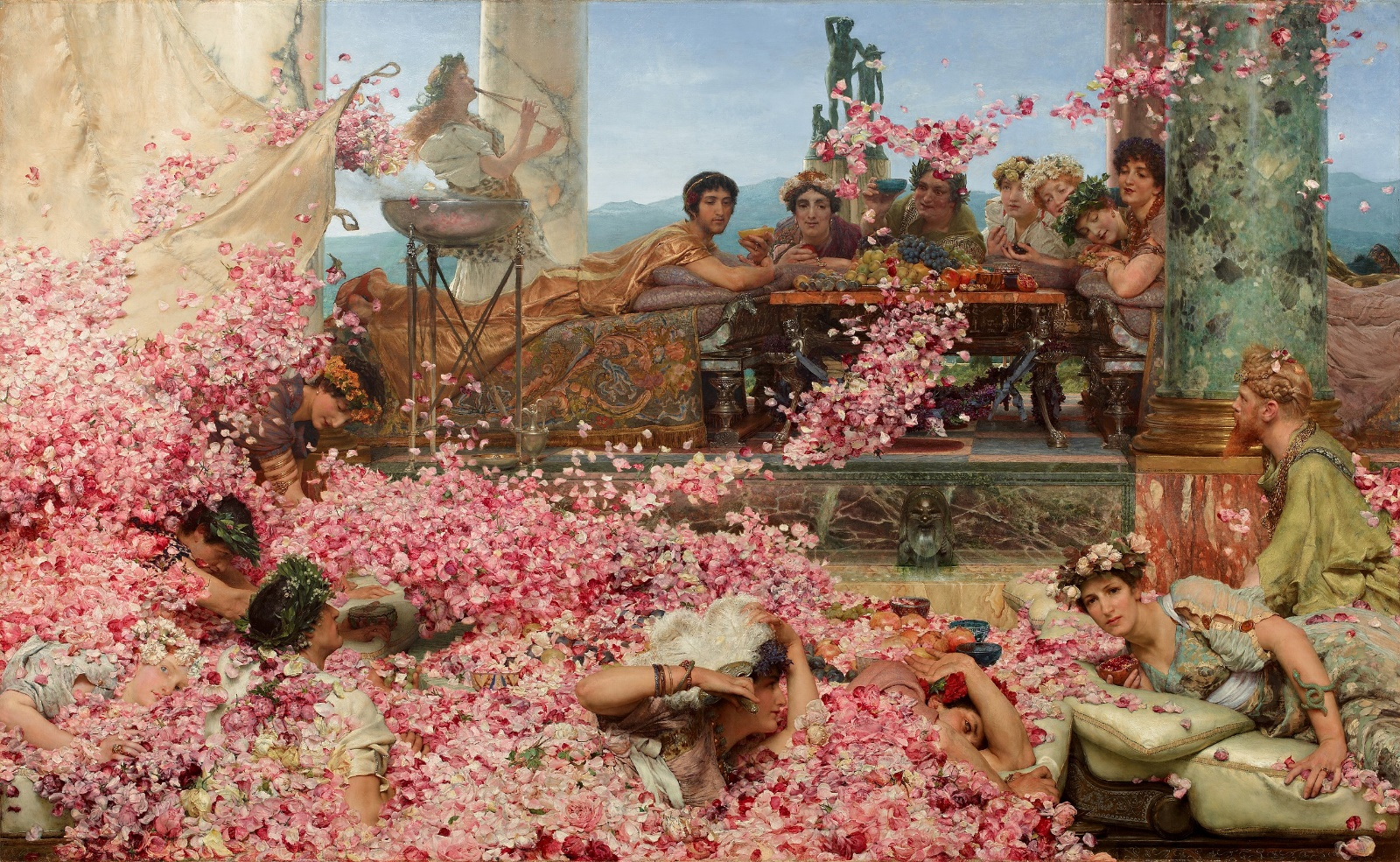

An exquisitely charming painting by Victorian artist Alma-Tadema, who should have taken inspiration from a fictive episode in Historia Augusta about the life of a young Roman Emperor Heliogabalus:
“(The Emperor) used the reversible roof in a banquet hall to make a rainfall of violets and other flowers onto his guests, in such abundance that some people, unable to emerge to the surface, seemed to die from suffocation”
The scattering of flowers can be traced to an ancient Greek and Roman ritual during festivals in honor of the goddesses of fertility. Instead of violets, Alma-Tadema had chosen red and pink rose petals for his painting
The scene shows an open-air dining area lined with white and green marble columns. In the background is a bronze statue featuring Bacchus and Ampelus, the latter a personification of the grapevine and lover of Bacchus. Heliogabalus, wearing a golden robe and a diadem, is seated at the table and watching the spectacle of his guests “drowning” in rose petals. To the Emperor’s left is a maenad, a mythological female follower of Bacchus, who is playing an aulos
Alma-Tadema was a popular artist in the late 19th century and known for his meticulous depiction of ancient architecture and costumes. As roses were out of season in England during the months when this work was painted, the artist is reputed to have had rose petals sent from the south of France each week to his studio